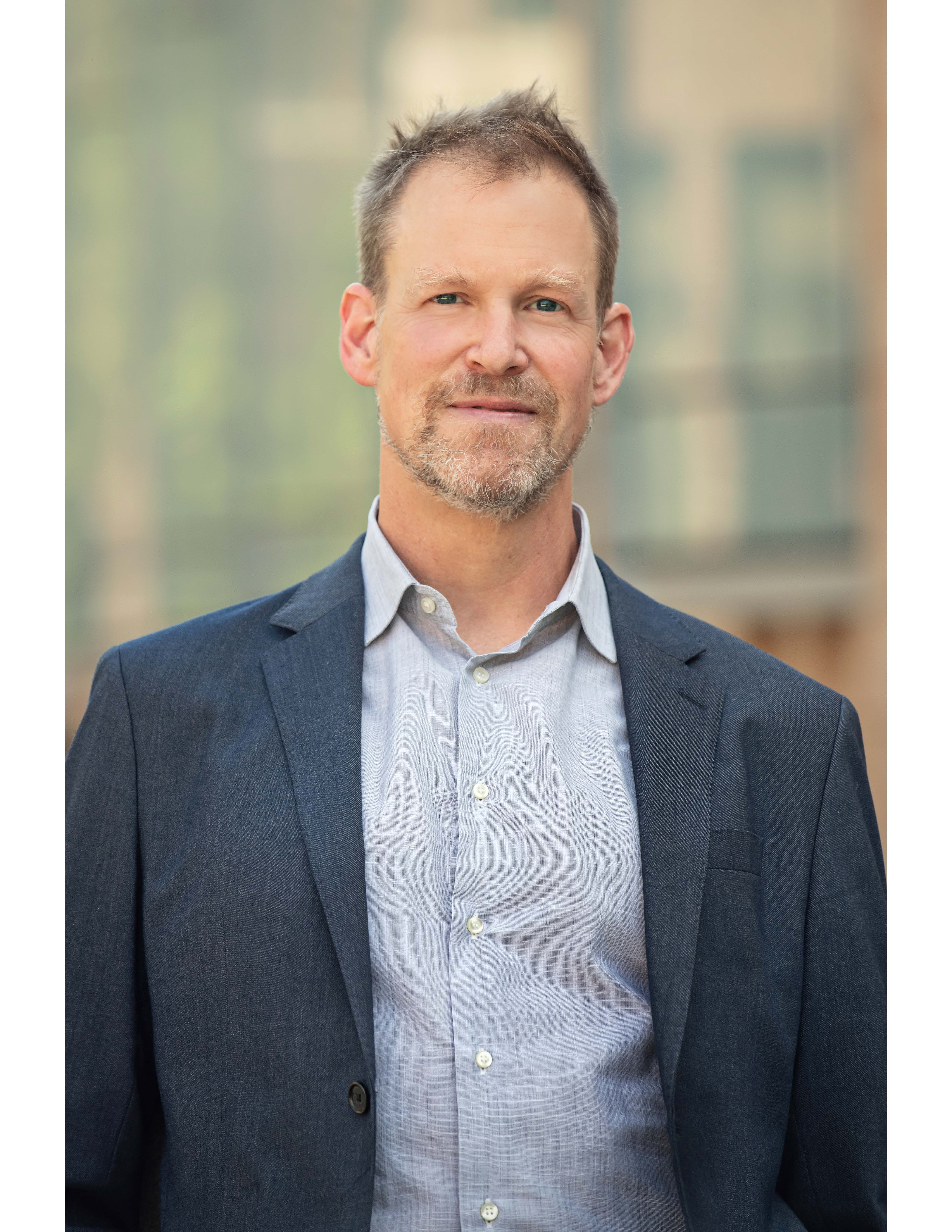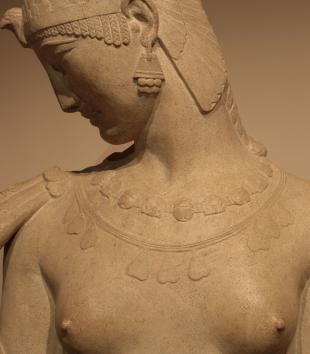Kati Curts is Assistant Professor of Religious Studies at Sewanee: The University of the South. She studies and teaches at the intersection of American religion, capitalism, and pop culture. She is currently working on a religious history of Henry Ford and the Ford Motor Company.

Hilma Af Klint, Series VII, No. 7B, 1920, graphite, oil paint, canvas. Photograph by Iliazd via Flickr.
In Fall 2020, our group (Paul Johnson, Emily Floyd, and Kati Curts) met on Zoom. The bulk of our conversation was a discussion of each of our individual contributions. Toward the end, we briefly reflected on shared aspects of our work and how our projects might be in conversation. In the following months, we spent time ruminating on our initial discussion, exchanging emails, and offering follow-up comments and questions. Below is a lightly edited record of our extended conversation.
Paul Johnson (PJ): Many thanks for the conversation the other day. A couple of your excellent questions have been gnawing at me. You asked: How is the idea of “planned sacred space” any different from other built sacred spaces across history? Aren't they all planned and designed? After pondering it, I think my response is that, while sacred space has conventionally tried to get at the question of how a given religious tradition and its values get variously articulated in materials and space, I'm interested in projects that maybe do the opposite, using space, art, and materials to try to generate a tradition and set of values that weren't previously conceptualized or practiced, or yet a tradition at all. True, Af Klint was inspired by her spirits, but not in any very specific way. By 1930 she wasn't directly mediating spirits, and she never really clarified a message from them; she was a vaguely Christian spiritist, like many others, but I think her message was more or less the art/color/shapes themselves.
Kati Curts (KC): It's such a delight to hear you think around these questions and to get the chance to think with you in the meanwhile. I think what you're describing is a compelling line of approach. It's also one that we can glimpse as part of a fairly long-standing method of ritual theory and material culture analysis more broadly, right? For instance, I think of your mention during our conversation of Jonathan Smith, and your approach here aligns well with his (among many others—including lots of people gathered with us in this MERA venture) . . . one which doesn't assume that material culture and ritual emerge from or are derivative of cognition, or belief, or inspiration, or whatnot. . . . I found myself wondering whether your turn to “planned” sacred space was a way for you to press on this point of departure in a new way. That is, not returning to an “older” approach in the study of religion (of presuming spirit compelling Af Klint’s action/design), but instead to press forward the dialectic in a renewed way. I wonder if you are proposing a kind of interpretive or methodological synthesis for the thesis-antithesis dialectic of belief/practice (or medium/message or spiritual/material) vis-a-vis “planning”? Admittedly, though, I also wonder: did I mis- or over-read you in this way?
PJ: Thanks Kati! Yes, we are all working on notions of material culture as it works dialectically on/with ideas and beliefs. I was trying to extend this further by pushing the question to the level of (and this is no doubt an ideal type to think with that can’t ever really exist historically) a group or artist that has no beliefs or traditions, only materials, colors, and spaces from which beliefs, assertions, experiences and traditions may, or may not arise. Maybe I'm mistaken, but that doesn't sound so trodden to me, though I'm not an active reader of Nova Religio or other journals in that vein. In other words, not a dialectic, only materials.
KC: Not too trodden at all, Paul! I’m intrigued by your mention of color in connection to the materiality of planning. Do Af Klint’s journals and sketches use color themselves, or refer to it? I also thought about how, as we all now Zoom into one another’s homes and flick through dark frames and virtual backgrounds in the gallery views of our rectangular screens, it feels like a newly urgent time to be rethinking the materiality of planned spaces, or those that otherwise somehow remain unbuilt or not-quite-built. Unbuilt-like maybe (to take a cue from you)? Designed, as you said; not dis/appeared. Admittedly, I do still have questions about that concept of “design,” which seems to caravan with questions of representation that I know you’ve thought lots about in your work already. But, in any case, I’ll certainly be returning to your study of Af Klint, as I keep thinking through the material forms of our own variously un/planned present.
Emily Floyd (EF): To me this is the key point about Af Klint—the idea that Af Klint designed a space that was meant to create a spiritual experience, without the need to embrace a preexisting belief system in order to then achieve that spiritual experience. So the question becomes, how can design create a spiritual experience independent from an established religious tradition or framework? I'm also interested in the category of “design,” with all that it evokes of Bauhaus, home redecorating, sleek kitchens and the like . . . what work is “design” doing for you that “planning” might not? In my notes from our Zoom conversation I have written “what is the ‘sign’ part of design?” The designed space is the intentional space, there is something more here beyond architecture, Af Klint is creating the complete experience. I was also interested in the question of color—from your post I was left wanting more information about the paintings themselves that she completed. While we don't have the building, we do have the paintings—what do they tell us about how she was thinking through design?
KC: Since we last had the chance to talk, I’ve found myself returning to ideas you each offered in response to my project—specifically about the category of “relic.” Emily, your point about the material array of Ford’s museum being more akin to ex votos than to relics has really stayed with me, particularly in connection with Paul’s follow-up observation about ex votos as material that gain power in massification, notably similar to Ford’s own forms of industrial production. It’s such a generative provocation. Thank you! As we talked about briefly during our video chat, my own use of “relic” was initially drawn from language used by and about Ford, especially in reference to the materials gathered in his industrial museum and village. But even if taken from the Ford archive, it’s certainly fair to say that—as Paul rightly noted in our conversation—“relic” is also my own analytic in a kind of immanent way, particularly in so far as I draw upon it in archival description, while also aiming for my study of Ford to contribute to a broader genealogy of that category itself. As part of my larger book project (“Fording Religion”), I’m hoping that it is also a way into a rethinking of the lingering matter of religion and its modes of assemblage. In this particular iteration of the project, I’ve drawn on the category of “relic” in a bit more circumscribed way, mostly to note the valence Ford gave to the materials he assembled and to the ways it can help us glimpse a theory of history he helped mass produce.
It’s probably worth noting that a version of Ford’s theory of history is oft-quoted but frequently misunderstood. He is regularly cited (rightly) for having said that history is bunk. What is somewhat less remarked upon is how the statement was not as much a presentist pronouncement as it was part of a broader appeal for a specific kind of history, one that he said centered on objectivity and lived history, which he then also positioned in contrast to what he claimed were inert, textual narratives otherwise meant to order the archive through g(u)ilded interpretations based in elite and aristocratic subjects. Part of what interests me about Ford as theorist of history is how he might contribute to questions of “primitive accumulation” in and for the study of religion. Ford’s notion of history emphasized carefully dusted folk-tales oriented on Americana objects, mechanical apparatus, and agricultural implements. The harrow—a machine used after plowing a field to help break up clumps of soil, remove weeds, or otherwise help level topsoil before planting seed—was one of Ford’s favorite examples, and he collected loads of these devices. According to Ford, the harrow represented a history of the common, the vernacular, the life of everyday Americans who Ford was, of course, also standardizing in and as historical subjects. So, I’m trying to work out and toward the ways that Ford’s accumulation of primitive Americana artifacts—or what I’ve been calling his run-of-the-mill relics—can help me re-approach the “harrowing” history Ford assembled in heterotopic spaces like that of his museum and village, factory and plantation. If primitive accumulation is central to origin stories of capital, I wonder if Ford’s reliquaries can also suggest possibilities for scholars of religion to reapproach the primitive matter of the relic positioned at the boundaries of ordinary and extraordinary, material and metaphysical, primitive and modern, religion and history, corporeal and incorporated. This categorical trade in scale and scope might, I am suggesting, be one way that Ford serves as a character for and, indeed, helps characterize material economies of religion in the Americas.
EF: I’ve been struggling to return to this conversation in part because my piece is based on the next chapter of my book, “The Global in the Local: Prints and the Shaping of Regional Spanish Colonial South American Religious Networks,” after the chapter I’m currently working on. I’m so close to being done with my current edits and moving onto that next chapter, but I’m not quite there yet and so I haven’t sat down to think through these ideas in full. But I’m almost there! And so sometimes you just have to make time to sit down and think with things. I welcomed your encouragement to think about insurance companies in relation to the confraternities. I think it was Paul who pointed out that insurance companies are about the distribution of risk and posed the question “How do you distribute your risk of going to hell/purgatory?” Thus far in working on this chapter I’ve been mostly interested in the way the confraternities construct imagined communities that extend across significant geographies and include living and deceased members. How did the membership documents, these fragile pieces of paper, help members in distant parts of the region feel connected to other members? But I’m also interested in the anxiety that seems to underlie these documents. How do you distribute your risk of going to purgatory? This was a real question as almost anything could land you in purgatory for some period of time, you had to police your thoughts as well as your actions. Guides on how to gain indulgences have an obsessive quality to them—all these little things you can do to reduce your time in purgatory (kissing crosses for instance, wherever you may find them, including in the lines of the pavement, the cobblestones). You needed the insurance that was confraternal membership as you had no way of knowing how much time you’d need to discount from purgatory. This single piece of paper, declaring your right to certain indulgences and masses, becomes key to your salvation. Who guarantees the confraternity’s promises? Will God know that you paid to join the confraternity if you lose the piece of paper that declares your affiliation? I’m also interested in questions of forgery, of verification, of confraternal-document-as-talisman, and of the ways in which the document takes on functions beyond those intended by the organization. I’m looking forward to exploring all these ideas when I finally get to work further on this chapter.
KC: I'm also excited to hear more about your thoughts on the medium of paper as you delve deeper into this material, Emily. Paper as fragile and possibly ephemeral. But also apparently enduring, right? Or, at least I think you mentioned something in our conversation about there actually being quite a lot of these kinds of documents (or perhaps you could set me straight if I'm remembering wrongly?!?). In any case, it's interesting to think about how this material quality of paper itself might mirror some of the observations you make here about the work of these documents for anxious but hopeful confraternity members seeking to distribute risk across their fragile communities, geographies, and (after) lives.
EF: Kati—I continue to be interested in the disjuncture between how Ford thinks about Brazil and how he thinks about the United States. This collecting of relics and amassing of referents to the past in the United States, whereas Brazil becomes this tabula rasa. Marx’s “primitive accumulation” is an especially interesting idea to think with if we also think about the other ways that “primitive” could be applied, i.e. in relation to how Ford envisions Brazil. Is his relation to Brazil an “accumulation of primitives” or of “the primitive” perhaps? It is fascinating to see someone so committed to the future and the new simultaneously so rooted and engaged in collecting a certain idea of the past.
KC: Your point, Emily, about Ford’s relation to Brazil is very much the line of questioning I'm trying to pursue. Thanks so much for this note! Both the images of Ford's ostensibly “enlightened” museum and those of the forest being cleared in Brazil for Ford's rubber plantation seem to offer a glimpse of Ford's trade in, accumulation of, and contribution to discursive histories of “the primitive” as part of Ford’s modern project. Elsewhere I also explore Ford’s engagement with Indigenous peoples in the American southwest as part of that story, too. I suppose none of this is particularly surprising, and certainly other historians have made similar observations about the production of the (never-been) modern. Yet, I find myself returning to the question of Ford’s modern in order to pause around ritual practices of collection and de/forestation as part of the cultivation of this category and its relation to the analytic of the relic. I am curious about the burning, logging, clearing, extraction, and conversion of that which is deemed “raw” material; the gathering, collecting, and acquisition of objects and the objective in and as history; and the rites/rights of capital and culture that they facilitated in Ford’s economies, as well as in the economic system christened in his/its name.
EF: In our Zoom conversation we concluded by talking about what joins our projects together. The uniting factor that most stuck with me is that of failure—the lack of realization of the project, the document that fails because the person is already dying or because the document itself gets lost, the building that never gets built. We talked a little about the barriers to realizing a project—the failures of execution caused by geographies, imperial ambitions, and gender. All of the projects we discussed are ambitious, their creators had visions of shaping something tremendously new, something big, and yet they were also profoundly fragile and vulnerable.
This conversation was based on Kati Curts's research into Henry Ford and the Ford Motor Company, Emily C. Floyd’s study of the Confraternity of Souls of the Cathedral of Lima, and Paul Christopher Johnson’s examination of Hilma Af Klint’s Temple.
Notes
Keywords
Imprint
10.22332/mav.convo.2022.4
1. Kati Curts, Emily Floyd and Paul Johnson, "Designing Risk, Accumulating Failure: Purgatory, the Planned, and Primitive Accumulation," Conversation, MAVCOR Journal 6, no. 3 (2022), doi: 10.22332/mav.convo.2022.4.
Curts, Kati, Emily Floyd and Paul Johnson. "Designing Risk, Accumulating Failure: Purgatory, the Planned, and Primitive Accumulation." Conversation. MAVCOR Journal 6, no. 3 (2022), doi: 10.22332/mav.convo.2022.4.





